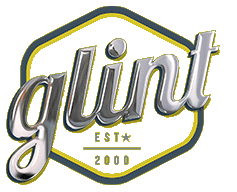Brands are not static; they must evolve as markets shift, consumer expectations change, and culture moves forward. But the real challenge lies in evolving without erasing the core identity that people already trust and recognize. At Glint Advertising, we believe a brand refresh is a delicate art: it’s about modernizing, not reinventing; adapting, not abandoning.
Why Markets Demand Evolution
Several signals suggest it may be time for a brand refresh:
- Changing customer demographics or psychographics. If your audience is younger, more diverse, and increasingly digital-first, your voice and visuals may need to adapt accordingly.
- Shifting consumer expectations. Trends in sustainability, authenticity, inclusive messaging, and brand purpose can render older positioning stale.
- Competitive disruption or category redefinition. New entrants might be redefining norms (e.g., direct-to-consumer brands, challenger players), pushing legacy brands to stay relevant.
- Cultural trends and aesthetic shifts. Design sensibilities evolve, and what looked modern five years ago can now feel dated.
However, change comes with risk. If a brand changes its identity too drastically or too quickly, it can confuse long-time customers or erode trust.
Learning from Successes and Cautionary Tales
Subtle, smart evolutions
- Coca-Cola has tweaked its visual identity over the decades. Still, it has preserved its signature script, red-and-white palette, and the contour bottle as core anchors, as reported by Investopedia.
- Old Spice repositioned itself for a younger demographic with humorous, irreverent campaigns, while retaining its core values of masculinity, scent, and heritage in the process.
- Airbnb, in its 2014 refresh, transitioned from a more amateurish logo to a cleaner, more inclusive “Bélo” mark, aligning with its shift from peer-to-peer listings to community, belonging, and global hospitality.
These brands succeeded because their changes were anchored in continuity; they didn’t discard everything; they extended what was working into a new era.
When things go off the rails
- Gap’s 2010 logo change is an oft-cited misstep: the company replaced its familiar blue-box logo with a stark, modern typeface variation. Customers reacted strongly, and the brand reverted to the former mark within a week, as reported by The Branding Journal.
- JCPenney, under Ron Johnson, attempted to abolish promotions and overhaul its entire pricing and merchandising philosophy. The abrupt shift alienated loyal customers accustomed to deals, and revenues plunged.
- Jaguar’s recent rebrand redrew its iconic leaping jaguar into a minimal abstract mark, pushing a “create exuberant, live vivid” theme that critics say ignored the brand’s essence of luxury heritage.
- Tropicana’s packaging redesign replaced the instantly recognizable orange-with-straw image with an abstract variant; within two months, sales dropped ~20% because consumers no longer recognized the product on shelves.
These cautionary tales highlight the fragility of emotional attachment, visual recognition, and trust. Alter too much, too fast—and you risk losing what people loved in the first place.
How to Refresh Responsibly: Glint’s Framework
Here are practical strategies to modernize while preserving brand equity:
Root every change in research and insight
Start with your audience. Conduct quantitative surveys and qualitative interviews to find out: What parts of your brand feel essential? Which touchpoints feel outdated? What emotional needs have shifted? Use this to define non-negotiable brand pillars (such as tone, purpose, heritage) that must remain constant.
Define a “change envelope”
Decide which elements can flex (e.g., color palette, typography, photography style, messaging tone) and which must stay steady (e.g., core symbol, brand promise). That envelope helps contain risk.
Roll out in stages (a phased transition)
- Begin internally by refining brand guidelines and testing prototypes with small audiences.
- Soft-launch in select markets, channels, or campaigns.
- Over time, migrate all touchpoints, including the website, packaging, signage, and social media, while maintaining co-branded transitions for legacy recognition.
Maintain consistency across touchpoints.
Even subtle inconsistencies (e.g., tone mismatch between website and packaging) erode trust. Use a brand asset management system and a phased rollout roadmap to synchronize updates.
Monitor feedback & adjust.
Use analytics, customer feedback, social listening, and A/B testing to spot friction or confusion. Be willing to tweak rather than lock yourself into a rigid final version.
Communicate transparently
Especially for consumer-facing brands, explain what’s changing and why. Help customers carry their trust forward, rather than blindsiding them.
How Glint Advertising Guides Brands Through Identity Evolution
At Glint, we help brands strike the balance between bold creativity and strategic prudence. Our approach:
- Discovery workshops help clarify which elements are sacrosanct and which can evolve.
- Brand architecture audits reveal how sub-brands, product lines, and messaging ecosystems interconnect, ensuring that changes ripple through the system cleanly and efficiently.
- Visual exploration suites allow stakeholders to see divergent directions side by side before committing.
- Pilot rollouts and phased activation plans ensure you don’t shock your audience.
- Ongoing governance support helps your team maintain a coherent brand over months and years.
We’ve seen how the world shifts rapidly: new platforms, cultural currents, and evolving expectations of brand purpose and transparency. A brand identity shouldn’t be set in stone, but it also shouldn’t be a house of cards. The strongest brands evolve from a stable core.
We invite you to explore our other blogs, which cover adaptive brand architecture, visual systems in motion, trend forecasting, and messaging strategy, to learn how brands can stay relevant without losing their identity.







